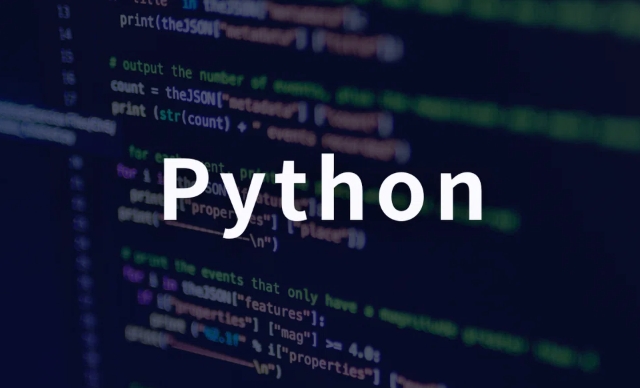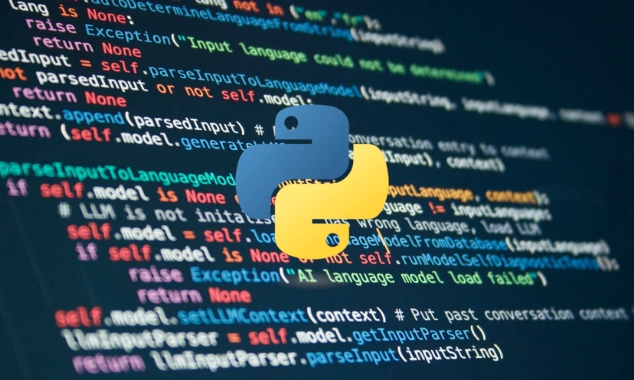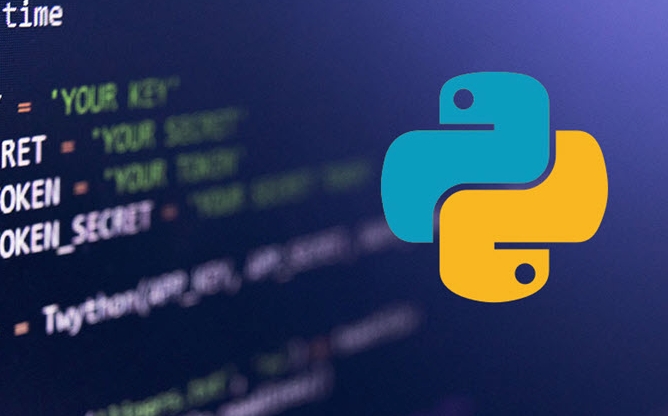 Backend Development
Backend Development
 Python Tutorial
Python Tutorial
 Advanced Decorators for Aspect-Oriented Programming in Python
Advanced Decorators for Aspect-Oriented Programming in Python
Advanced Decorators for Aspect-Oriented Programming in Python
Jul 29, 2025 am 03:00 AMTo use advanced decorators to implement logging and performance monitoring, you can write multi-layer nested decorators that support parameter control functions; secondly, decorators with status can encapsulate status information through class; in addition, the execution order when multiple decorators are superimposed is from bottom to top. For example, the log_and_time decorator controls whether logging or counting time-consuming through enable_log and enable_time parameters, and uses three-layer function nesting to pass parameters in the structure; the Counter class is a decorator with state, and uses the __call__ method to record the number of function calls; when multiple decorators such as @decorator1 and @decorator2 are used at the same time, the actual execution order is decorator1(decorator2(my_func)), that is, the inner decorator is executed first, and the outer decorator is executed later, so the core logic should be placed in the inner layer, non-critical processes should be placed in the outer layer, and manually expanded to confirm the correctness of the order.

Decorators are a very handy tool when you want to write clearer and maintainable code in Python. But if you have been exposed to some advanced usage, especially those related to AOP, you may feel that ordinary decorators are a bit "not enough". At this time, Advanced Decorators come in handy.

How to use decorators to implement logging and performance monitoring
These are two of the most common uses in AOP: recording function execution and measuring time. A high-level approach is to write a decorator that can both log and time, and can switch functions according to parameters.
For example:

import time
import logging
def log_and_time(enable_log=True, enable_time=True):
def decorator(func):
def wrapper(*args, **kwargs):
if enable_log:
logging.info(f"Calling function: {func.__name__}")
start = time.time()
result = func(*args, **kwargs)
end = time.time()
if enable_time:
logging.info(f"{func.__name__} took {end - start:.4f}s")
return result
Return wrapper
Return decoratorThis allows you to flexibly control which functions require logs and whether they need to count the time. for example:
@log_and_time(enable_log=False, enable_time=True)
def heavy_task():
time.sleep(1)The key to this structure is multi-layer nested functions and how to pass external parameters into it. If you only write one layer of wrapper, the parameters will be difficult to deal with.

How to write a decorator with status
Sometimes you want the decorator to remember some information, such as the number of calls, the result of the last run, etc. At this time, you need a decorator with state. The most commonly used method is to encapsulate state with classes and implement the __call__ method.
Let's take a look at a simple counter decorator:
class Counter:
def __init__(self, func):
self.func = func
self.count = 0
def __call__(self, *args, **kwargs):
self.count = 1
return self.func(*args, **kwargs)
@Counter
def says_hello():
print("Hello")
say_hello()
say_hello()
print(say_hello.count) # Output 2 In this example, Counter is a class that takes a function and wraps it. Each time a function is called, the counter is first increased and then the function is executed. You can apply it anywhere you want to track the number of calls.
If you want the decorator to support parameters, you have to combine the multi-layer nested structure mentioned above, or inherit functools.partial to make more complex customization.
The order of the decorators will affect behavior, don't make a mistake
When multiple decorators are superimposed, their execution order is from bottom to top. for example:
@decorator1
@decorator2
def my_func():
passEquivalent to:
my_func = decorator1(decorator2(my_func))
So, if you have two decorators, one is responsible for authentication and the other is responsible for caching. Different orders may lead to unauthenticated data being cached, or you still check the cache after authentication fails, this will easily lead to problems.
suggestion:
- Put the core logic at the innermost level (such as permission checking)
- Non-critical processes on outer layer (such as logs, monitoring)
- After writing, expand it manually to see if the order is correct
Let's summarize
Python decorators can be very basic or complex. If you want to use it to do the AOP set of things, such as unified handling of exceptions, permissions, caches, logs, and metric collection, you must master the above advanced skills.
These things are not complicated, but they are easy to ignore details. For example, the nested structure, state saving method, and execution order of the decorator, all directly affect the behavior of the program. It is best to work with test cases when writing to ensure that each decorator works as expected.
Basically that's it.
The above is the detailed content of Advanced Decorators for Aspect-Oriented Programming in Python. For more information, please follow other related articles on the PHP Chinese website!

Hot AI Tools

Undress AI Tool
Undress images for free

Undresser.AI Undress
AI-powered app for creating realistic nude photos

AI Clothes Remover
Online AI tool for removing clothes from photos.

Clothoff.io
AI clothes remover

Video Face Swap
Swap faces in any video effortlessly with our completely free AI face swap tool!

Hot Article

Hot Tools

Notepad++7.3.1
Easy-to-use and free code editor

SublimeText3 Chinese version
Chinese version, very easy to use

Zend Studio 13.0.1
Powerful PHP integrated development environment

Dreamweaver CS6
Visual web development tools

SublimeText3 Mac version
God-level code editing software (SublimeText3)

Hot Topics
 Polymorphism in python classes
Jul 05, 2025 am 02:58 AM
Polymorphism in python classes
Jul 05, 2025 am 02:58 AM
Polymorphism is a core concept in Python object-oriented programming, referring to "one interface, multiple implementations", allowing for unified processing of different types of objects. 1. Polymorphism is implemented through method rewriting. Subclasses can redefine parent class methods. For example, the spoke() method of Animal class has different implementations in Dog and Cat subclasses. 2. The practical uses of polymorphism include simplifying the code structure and enhancing scalability, such as calling the draw() method uniformly in the graphical drawing program, or handling the common behavior of different characters in game development. 3. Python implementation polymorphism needs to satisfy: the parent class defines a method, and the child class overrides the method, but does not require inheritance of the same parent class. As long as the object implements the same method, this is called the "duck type". 4. Things to note include the maintenance
 Python Function Arguments and Parameters
Jul 04, 2025 am 03:26 AM
Python Function Arguments and Parameters
Jul 04, 2025 am 03:26 AM
Parameters are placeholders when defining a function, while arguments are specific values ??passed in when calling. 1. Position parameters need to be passed in order, and incorrect order will lead to errors in the result; 2. Keyword parameters are specified by parameter names, which can change the order and improve readability; 3. Default parameter values ??are assigned when defined to avoid duplicate code, but variable objects should be avoided as default values; 4. args and *kwargs can handle uncertain number of parameters and are suitable for general interfaces or decorators, but should be used with caution to maintain readability.
 Explain Python generators and iterators.
Jul 05, 2025 am 02:55 AM
Explain Python generators and iterators.
Jul 05, 2025 am 02:55 AM
Iterators are objects that implement __iter__() and __next__() methods. The generator is a simplified version of iterators, which automatically implement these methods through the yield keyword. 1. The iterator returns an element every time he calls next() and throws a StopIteration exception when there are no more elements. 2. The generator uses function definition to generate data on demand, saving memory and supporting infinite sequences. 3. Use iterators when processing existing sets, use a generator when dynamically generating big data or lazy evaluation, such as loading line by line when reading large files. Note: Iterable objects such as lists are not iterators. They need to be recreated after the iterator reaches its end, and the generator can only traverse it once.
 Python `@classmethod` decorator explained
Jul 04, 2025 am 03:26 AM
Python `@classmethod` decorator explained
Jul 04, 2025 am 03:26 AM
A class method is a method defined in Python through the @classmethod decorator. Its first parameter is the class itself (cls), which is used to access or modify the class state. It can be called through a class or instance, which affects the entire class rather than a specific instance; for example, in the Person class, the show_count() method counts the number of objects created; when defining a class method, you need to use the @classmethod decorator and name the first parameter cls, such as the change_var(new_value) method to modify class variables; the class method is different from the instance method (self parameter) and static method (no automatic parameters), and is suitable for factory methods, alternative constructors, and management of class variables. Common uses include:
 How to handle API authentication in Python
Jul 13, 2025 am 02:22 AM
How to handle API authentication in Python
Jul 13, 2025 am 02:22 AM
The key to dealing with API authentication is to understand and use the authentication method correctly. 1. APIKey is the simplest authentication method, usually placed in the request header or URL parameters; 2. BasicAuth uses username and password for Base64 encoding transmission, which is suitable for internal systems; 3. OAuth2 needs to obtain the token first through client_id and client_secret, and then bring the BearerToken in the request header; 4. In order to deal with the token expiration, the token management class can be encapsulated and automatically refreshed the token; in short, selecting the appropriate method according to the document and safely storing the key information is the key.
 What are Python magic methods or dunder methods?
Jul 04, 2025 am 03:20 AM
What are Python magic methods or dunder methods?
Jul 04, 2025 am 03:20 AM
Python's magicmethods (or dunder methods) are special methods used to define the behavior of objects, which start and end with a double underscore. 1. They enable objects to respond to built-in operations, such as addition, comparison, string representation, etc.; 2. Common use cases include object initialization and representation (__init__, __repr__, __str__), arithmetic operations (__add__, __sub__, __mul__) and comparison operations (__eq__, ___lt__); 3. When using it, make sure that their behavior meets expectations. For example, __repr__ should return expressions of refactorable objects, and arithmetic methods should return new instances; 4. Overuse or confusing things should be avoided.
 How does Python memory management work?
Jul 04, 2025 am 03:26 AM
How does Python memory management work?
Jul 04, 2025 am 03:26 AM
Pythonmanagesmemoryautomaticallyusingreferencecountingandagarbagecollector.Referencecountingtrackshowmanyvariablesrefertoanobject,andwhenthecountreacheszero,thememoryisfreed.However,itcannothandlecircularreferences,wheretwoobjectsrefertoeachotherbuta
 Describe Python garbage collection in Python.
Jul 03, 2025 am 02:07 AM
Describe Python garbage collection in Python.
Jul 03, 2025 am 02:07 AM
Python's garbage collection mechanism automatically manages memory through reference counting and periodic garbage collection. Its core method is reference counting, which immediately releases memory when the number of references of an object is zero; but it cannot handle circular references, so a garbage collection module (gc) is introduced to detect and clean the loop. Garbage collection is usually triggered when the reference count decreases during program operation, the allocation and release difference exceeds the threshold, or when gc.collect() is called manually. Users can turn off automatic recycling through gc.disable(), manually execute gc.collect(), and adjust thresholds to achieve control through gc.set_threshold(). Not all objects participate in loop recycling. If objects that do not contain references are processed by reference counting, it is built-in





